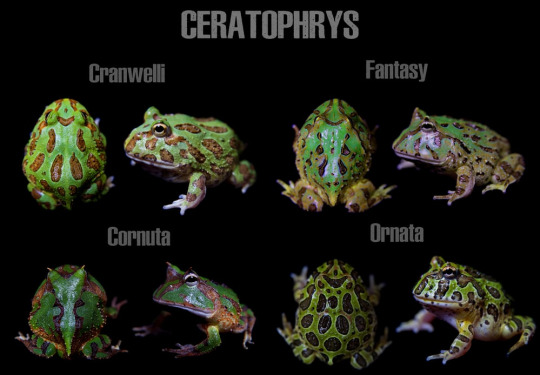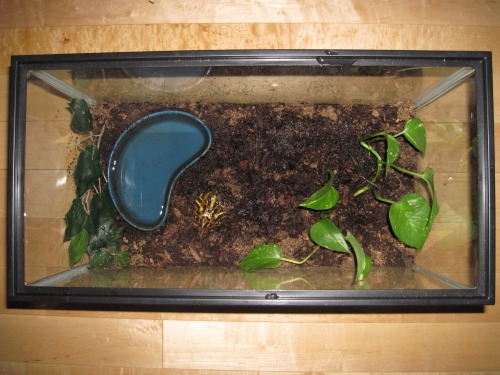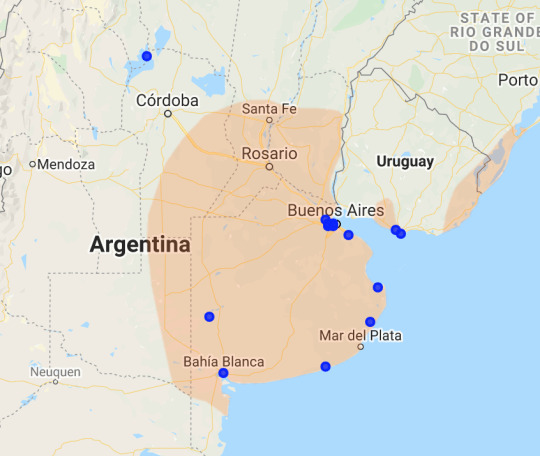#jzar
Explore tagged Tumblr posts
Text
Verdict après avoir regardé l'empire du milieu
#Jui drunk mais jzar me out he is yhe only reason why i watcj this film. I knew it would be bad (didn't know how bad. Didn't expect it to be#THAT BAD) (je m'attendais a r jsuis quanf meme déçue mais ORSELANE)#journaliteuse#Orelsan#Asterix l'empire du milieu#Asterix#Video#earrape#pigesona#myart
38 notes
·
View notes
Photo

1. Scowl I (Serena & Jzar)
I imagine the scowl in Benito Vergara’s book Displaying Filipinos: Photography and Colonialism in Early 20th Century Philippines (1995). Indigenous Filipino women were made to stand in front of the camera, and smile. But they don’t smile. Instead, they return a look to the invasive camera, which none of the American photographers could describe. It was the scowl, which Jzar translates into “lisik,” or a piercing look. We try here to translate that scowl. Image and caption courtesy of Carlo Paulo Pacolor.
30 notes
·
View notes
Photo



MOTOGP 2021 PODIUMS qatar grand-prix (04.04) — 1. fabio quartararo — 2. johann zarco — 3. jorge martín
#fqua#jzar#jmar#mgp#mgp: edit#mgpwin#e: mgp#e: fabio quartararo#e: johann zarco#e: jorge martín#e: gr#e: all
57 notes
·
View notes
Photo

Beautiful Anfisa wearing our new pearl neckless 📸#newarravels #JZarNYC #myJZar #jewelry #jewels #jewel #JZar.NYC #fashion #gems #gem #gemstone #bling #stones #stone #trendy #accessories #love #crystals #beautiful #ootd #style #fashionista #accessory #instajewelry #stylish #cute #jewelrygram #fashionjewelry#neckleses (at New York, New York)
#jewels#fashionista#style#newarravels#accessory#fashionjewelry#stylish#neckleses#love#stones#jzar#fashion#gemstone#trendy#beautiful#crystals#cute#jewelry#bling#instajewelry#stone#jzarnyc#gems#accessories#jewel#myjzar#jewelrygram#ootd#gem
2 notes
·
View notes
Text
Deputy Vega: so we all agree that jacob is the hottest piece of ass right?
Deputy Teet: not this again
Deputy Jzar: well i definitely agree with you - teet on the other hand i don't know
Deputy Teet: can we not guys
Deputy Vega: for shame teet - jacob is a thicc man and i will not let you dismiss the hotness of his thigh holster and his beard
Deputy Jzar: amen sister
Deputy Teet: look - you can talk about jacob anytime you want but not here
Deputy Vega/Deputy Jzar: why?
Jacob Seed: because i've been here the whole time
Deputy Vega: oh you're real thought you were just a dream *winks*
Jacob Seed sighs and opens the music box and all three of the deputies start screaming
#far cry 5#deputy#jacob seed#deputy teet#deputy jzar#deputy vega#only you#incorrect quotes#incorrect far cry 5 quotes
15 notes
·
View notes
Text
يمكن محتاج اني اريح، دماغي تتفرم تتسيح
2 notes
·
View notes
Photo

Nichole is this week's Featured Artist and these are her Top Posts - FOLLOW Nichole! @itsnicholehair @itsnicholehair @itsnicholehair . . . . . Reposted from @itsnicholehair She back ✨ fresh roots & @brazilianblowout on @woahkenzy 🤩 https://www.instagram.com/p/CfaLoX-JzAr/?igshid=NGJjMDIxMWI=
1 note
·
View note
Text
How Can We Do Better By Pacman Frogs?
Pacman frogs (genus Ceratophrys) are one of the most common pet frogs, and for good reason! They’re large, personable frogs that come in a wide variety of morphs and can live up to 10 years. There are eight species in the genus, though only three are common in captivity (C. cranwelli, C. ornata, C. cornuta), as well as a hybrid of C. cranwelli and C. cornuta usually labelled as a “fantasy pacman frog.” Occasionally you may see some of the other species for sale, but not nearly as often. This article focuses on the three most common species of pacman frog, excluding the hybrids.
This article is not intended to be used as a care sheet. Please do further research of your own to figure out the best way to care for your pet pacman frog.

Visual differences between the three common pet pacman frogs, plus the ‘fantasy’ hybrid (source)
Unfortunately, in my experience, out of all the common pet frogs, pacman frogs seem to suffer the most from minimalistic husbandry practices. Perhaps this is due to their reputation as ‘pet rocks’- they are nocturnal sit-and-wait predators, so keepers are unlikely to see them out and about during the day. A common sight in pacman frog groups and forums is a bin or tank of no more than 10 gallons, with just some dirt, a heat mat, and a large water dish. But is that really the best we can do for them?

An example of a fairly typical 10 gallon setup for a pacman frog. (source)
In order to answer that question, we’ll first need to delve into their lives in the wild.
In the wild, the ranges of cranwelli, cornuta, and ornata are for the most part separate. Cranwelli is found in the dry chaco region, which includes parts of Argentina, Paraguay, Bolivia, and Brazil. Ornata is found in Argentina and Uruguay, ranging to the coast. Cornuta is found much further north and has the largest range, including Brazil, French Guiana, Suriname, Colombia, Peru, and Bolivia. There’s some possible overlap between cranwelli and ornata in Argentina.

Comparisons from Berkeley Mapper of pacman frog distribution. Orange is range as listed by the IUCN, and the blue dots are amphibiaweb records of collection sites.
Most care sheets and keepers treat these species as interchangeable as far as care requirements, but I’m a little more skeptical. Let’s go species by species through habitat information!
Ceratophrys cranwelli
The most common species of pacman frog lives in the hot, semiarid Gran Chaco region, which contains mainly dry thorn forests, savannas, and low hardwood forests. Much of the water is seasonal, but there are two permanent rivers. When it’s hot and dry, cranwelli will burrow into the soil and grow a protective layer of skin, then aestivate until the climate becomes more suitable for them again. Soil is primarily sand and clay-based. Average temperatures across the region range from 60-85 F, with average humidity ranging from 50-75%.

One of the types of habitat in the Gran Chaco in Paraguay (source)
Ceratophrys ornata
These guys live in the Pampas region of Argentina, in subtropical grasslands and seasonal wetlands. Vegetation is primarily grasses and shrubs with few trees. Humidity seems to stay around 70-80% on average. The yearly average temperature is just around 65F, with average lows around 55 and average highs around 75. Soil is described as fertile. The frogs are primarily found around the bodies of water where they breed.

Temperature information for three locations in the Pampas region

A view of the Pampas (source)
Ceratophrys cornuta
The third of the common pet pacman frog species is found in the Amazon rainforest and the Amazon basin. The yearly average temperature is around 77 F but can reach up to the 90s during the day and down to the upper 60s/lower 70s at night. Humidity in the amazon rainforest averages 77% in the dry season and 88% in the wet season, according to the WWF. One study on the biology of cornuta cites the forests where they live as either terra firma or inundated forest and the soil asloam mixed with silt and/or clay. Individuals were usually found partially burrowed under leaf litter, with their backs near roots or logs. They mostly moved around during nights when there had been rainfall in the previous 24 hours.
In my opinion, the differences in habitat between the three species indicates that captive Ceratophrys frogs should be kept in somewhat different conditions in captivity as well. Cornuta would likely do well with plenty of leaf litter to burrow into, and seems to like the highest humidity of the three. Cranwelli seems to need the least humidity, and would likely appreciate some plant or wood cover, such as scrub vegetation. Ornata seems to need higher humidity than cranwelli, but perhaps not as high as cornuta. Their primary vegetation in the wild are grasses, so it would be recommended to mimic that in terraria. The different species may do better at different temperatures as well. I would recommend doing further research on your own on temperatures in their native habitats before deciding what temperature to keep your own pacman frog at.
In general, the small terrariums pacman frogs are typically kept in are inadequate. While a 10 gallon may be fine for growing out a young baby, many of whom are irregular eaters until adulthood, These frogs can grow anywhere from 2-6 inches, possibly more, depending on species and gender. I recommend a minimum of a 20 long (footprint of 360sq in) for male pacman frogs and a 40 breeder (footprint of 640sq in) for female pacman frogs. Of course, you can always go larger- I keep my male ornata in a 40 breeder and I have never felt the space was wasted.
All pacman frogs share some basic needs: enough substrate to burrow all the way into, a large water dish that they can soak their entire body in, cover of some sort be it hides or plants, a heat gradient, and access to UVB.
Most keepers recommend a heat mat taped to the side of the tank for providing supplemental heat. You should never use a heat mat on the bottom of the tank as pacman frogs will burrow to cool themselves down when it gets too hot. Overhead heat would be ideal, and there are many ways to go about that, each with its own pros and cons. Unless your house is particularly cold, your frog should be fine with a nighttime temperature drop down to the mid 60s/lower 70s.
UVB supplementation is controversial in the herp hobby for many species, and pacman frogs are no exception. They may be nocturnal, but that only means they are primarily active at night and does not preclude them from being exposed to sunlight. I would consider them to be a part of Ferguson Zone 1 as outlined in Ferguson et al. (2010). Animals in this zone are cryptic baskers, typically crepuscular or nocturnal. They would not need high levels of UVB, but appropriate use of a low output UV bulb is unlikely to be harmful provided the frog is able to avoid the light should they choose. I personally use a reptisun T8 5.0, but any light with a similar output used at the manufacturer recommended distance should be safe. Make sure your pacman frog is able to hide from the light if they want to by providing them with hides, plants, pieces of wood, etc.
Ultimately, we can do better by pacman frogs by simply treating them like more than pet rocks. Give them space to move around, do research into the native habitat of the species you own and do your best to mimic it in your terrarium. Feed them a variety of foods - these guys can and do eat almost anything from ants to other frogs and reptiles. Give them more than just dirt and a water dish. Make sure to only purchase captive-bred individuals. These frogs will never race around their tank or be able to be kept happily with other frogs, and you may almost never see them move during the day, but that doesn’t mean they don’t use their space in their own way.
The way I see it, you can either provide space and enrichment that they might not use, or you can deprive them of space and enrichment that they may benefit from. I think the former is preferable to the latter.
Sources, References, and Further Reading
Cranwelli
https://www.britannica.com/place/Gran-Chaco/
https://www.iucnredlist.org/species/56338/11464257
http://www.faunaparaguay.com/ceratophryscranwelli.html
Ornata
https://www.britannica.com/place/the-Pampas
https://www.iucnredlist.org/species/56340/11464790
https://en.wikipedia.org/wiki/Climatic_regions_of_Argentina#Statistics_for_selected_locations_5
Cornuta
https://galapagosinsiders.com/travel-blog/climate-weather-amazon-rainforest-temperatures/
https://www.jstor.org/stable/3892875?seq=1
https://www.iucnredlist.org/species/56337/11464093#habitat-ecology
https://wwf.panda.org/knowledge_hub/where_we_work/amazon/about_the_amazon/
General
https://bioone.org/journals/south-american-journal-of-herpetology/volume-9/issue-2/SAJH-D-14-00008.1/On-the-Diet-of-the-Frogs-of-the-Ceratophryidae/10.2994/SAJH-D-14-00008.1.short
https://www.jzar.org/jzar/article/view/150
#reptiblr#amphiblr#pacman frog#ceratophrys#ceratophrys cornuta#ceratophrys ornata#ceratophrys cranwelli#my guides
249 notes
·
View notes
Text
Yesterday@xxjzargho and I played Elder Scrolls and got married, and she tried to take me to a worm cult place but the cultists fought us and wouldn't let me join so jzar made us a guild called Guild of the Worm and that's the basis for a healthy happy marriage boys take note
4 notes
·
View notes
Text
0 notes
Photo





MOTOGP 2020 PODIUMS 01. Gran Premio Red Bull de España 02. Gran Premio Red Bull de Andalucia 03. Monster Energy Grand Prix České Republiky 04. myWorld Motorrad Grand Prix von Österreich 05. BMW M Grand Prix of Styria 06. Gran Premio Lenovo di San Marino e Della Riviera di Rimini 07. Gran Premio Lenovo di San Marino e Della Riviera di Rimini 08. GP Tissot Dell'Emilia Romagna e Riviera di Rimini 09. Gran Premi Monster Energy de Catalunya 10. Shark Helmets Grand Prix de France 11. Gran Premio Michelin de Aragón 12. Gran Premio Liqui Moly de Teruel 13. Gran Premio de Europa 14. Gran Premio Motul de la Comunitat Valenciana 15. Grande Prémio MEO de Portugal
#no this didn't take me all afternoon to make#mgp#mgp: edit#fqua#mvin#adov#vros#bbin#fmor#jzar#jmir#jmil#moli#pesp#pbag#arin#amar#dpet#e: mgp#e: all#e: gr#e: 100
133 notes
·
View notes
Note
Some aquariums don't treat dolphins very well whyareyousupportingthem.


“I think it’s unfair to stop supporting ALL aquariums, and zoological parks as a whole just because many seem to be profit-based organisations. But…”
((I’m assuming this is about my first post where I joked that Jotaro was forced into wearing a dolphin suit for free admission forever to his local aquarium but anyway please read the rest of the jumbled mess of a mildly ic opinionated essay under the cut. お願いします!))
“But first, let’s talk about dolphins since you brought them up. The Chinese White Dolphin is a favourite of my blog’s moderator. There’s approximately a 2.5% annual decline in their populations within crucial habitats in the Pearl River estuary. Even under the most ideal conditions, other experts can only agree that the species would be able to survive for another 40 generations. However, it is far far less than ideal. Besides organochlorines, heavy metals and other pollutants in their oceans, coastal development destroying habitats, vessel collision due to increasing marine traffic, underwater noise pollution, and overfishing are other factors rendering propagation in the wild … difficult, to say the least.
This is not a new situation. The Baiji dolphins which inhabited the Yangtze River had suffered similar circumstances and were considered to be functionally extinct in late 2006. It is also considered to be arguably the first dolphin species in history to be driven to extinction.
But back to your question, I am most definitely against any aquariums and zoos that use the animals in their care solely for entertainment and profit, especially if said animals involve species that have high cognitive potential with relationships and social identity being intertwined in how they survive normally in the wild. I also believe that despite the rapid degradation of habitats, I think captivity breeding isn’t the best method for conservation—especially for large marine mammals such as dolphins—as it has its own host of barriers, such as ensuring the starting population is genetically viable, keeping them alive in the long-term, and acquiring sufficient accommodation to house them in the first place. Reintroducing captive borns into the wild is also a difficult task due to likely lacking immunity to wildlife diseases and needing to be reintegrated into wild populations’ social structures. In fact, the few efforts for captive breeding of a similar breed of Pink Dolphins haven’t proved very successful in Singapore’s Sentosa. Capturing a viable starting population is also dangerous as catching methods can gravely injure them.
The most ideal situation for conservation of dolphins and cetaceans would be to first conserve their crucial habitats. So no, I don’t wholeheartedly support dolphinariums or marine mammal parks that insist on sketchy breeding programmes often accompanied by daily 20-minute dolphin performances.
Nevertheless, it is not an ideal world. Unless governments are willing to expand protected zones for these creatures and compromise for sustainable development, more and more may believe captive breeding should unfortunately be considered their last hope.
For example, if I had to grossly simplify the debate on whether the Chinese White Dolphin should be bred in captivity or not then whichever side you support would ultimately be whether one valued the species’ survivability in captivity in terms of their recorded average life spans and infant mortality rates compared to those in the wild over their quality of life, that is, enjoying freedom and a “good life” in animal welfare terms.
I dearly hope that captive breeding will never be considered a necessity for the propagation of these magnificent creatures, but if there comes a time when we do find the Chinese White Dolphin to be functionally extinct in the wild, I will do whatever I can to try to keep the species alive if there are still any in captivity, and hopefully one day reintroduce them back into Hong Kong waters once sufficient protected zones are established.
Regardless, I can’t deny that captive breeding has or is forecasted to have a great positive impact for other species, marine or terrestrial. For example, captive breeding programmes for salmonids have succeeded in maintaining neutral genetic diversity for several generations (albeit with trends in reduced fitness in offspring), which may be sufficient for whatever dangers in their natural habitats to be removed. Conservation efforts in European and American zoos for the breeding of King Penguins have also proved successful, which is quite a breakthrough as climate change in the Southern Ocean is likely to cause drastic wild population declines in the future. And, while not a marine animal, the Arabian Oryx conservation effort is another significant example.
Still, my overall conclusions for captive breeding in aquariums and zoos is to think of them not as the final solution but a possible plan B until the factors contributing to their initial decline can be addressed. (Though there is the issue with ‘rehab’ animals deemed unreleasable by the Association of Zoos and Aquariums but that’s something to discuss for another time).
Anyhow, aquariums also benefit marine conservation beyond breeding programmes such as research into diseases along with the development of vaccinations, rehabilitation (as the second anon mentioned) and overall responsible promotion and education of marine conservation. Also, it’s unrealistic for facilities to “empty their tanks” and dump their captive born into the wild without meticulous plans for safe and proper transition. Good grief, let’s not forget a similar incident in America where tens of thousands of minks were …forcibly released from a farm only for most of them to likely die of starvation and negatively affect the surrounding ecosystem.
Many marine biologists can say their interest was born from visiting aquariums when they were young. Moreover, there are studies that looked into the positive educational impact of zoos and aquariums in the most recent volume of the Journal of Zoo and Aquarium Research, which you may read. Their ability to expose youth to the wonders of marine life is important, though I’d prefer if they weren’t so plentiful and more were NGO non-profit based.
If it helps, I generally judge an aquarium by at least the following criteria:
Prioritize and support human entertainment with dolphin, whale, seal, penguin, etc. shows (especially if they have little emphasis on education)?
Entirely profit-based with very little budget allocation to conservation or research efforts?
Support untrained customers touching and petting captive animals?
No ties to legitimate academic institutions and research projects?
Saying yes to any of the above means it’s likely not that great of an institution, which is, unfortunately, probably most of them. It’s likely your local aquariums do break one of these criteria, but campaigning to shut them down entirely doesn’t have to be the only option, perhaps they can change with enough pressure–unless they are absolutely unforgivable that is.
What I’m saying is that every conservation facility, zoos or aquariums, are unique in their level of ethics and should be considered individually. Responsible zoos and aquariums that prioritise facilitation and promotion of conservation of animals are very much needed in the current era. Elizabeth Kolbert, author of ‘The Sixth Extinction: An Unnatural History’, had suggested we are amidst a sixth mass extinction event and that 20-50% of all flora and fauna on earth will be lost by the end of the 21st century . Unfortunately, this one being different than the others with human activity playing a significant part. While it would be ideal if animals could thrive on their own in the wild or protected areas, that is ultimately not so …easy for most endangered and threatened species, to say the least.
Apologies if this comes across as very vague as this is mostly my own ramblings from the top of my head. Relevant links below if you’re interested:
Study on captive breeding of Salmonids
Study on captive breeding of King Penguins
Study on the effect of the zoo setting on the behavioural diversity of captive Gentoo Penguins and the implications for their educational potential
Study on impact of in-school zoo education programmes
HK Dolphinwatch
I recommend JZAR if you’re interested in zoo biology and related fields. I believe all their articles are open access so do check them out.”
((DISCLAIMER: I’m NOT an expert nor do i have formal education in marine science. I’ve been interested in it since I had the pleasure to see a Chinese White Dolphin during a local dolphin watch tour by the HK Dolphinwatch when I was a wee child a decade ago. There were over 180 dolphins recorded in 2003 but the numbers have since declined to 87 in 2010 and 47 in the last year. Ocean Park, which is basically the only large marine mammal park–and conservation facility on the side–in Hong Kong, has shown interest in breeding them in captivity but ofc there’s a lot of criticism to that, most of which I agree with but god the whole situation is really distressing and idk what we can do because the government sure isn’t gonna do anything like expanding protected zones or enforcing regulation on marine traffic through those zones. In fact, the new zhuhai bridge and other runways they’re using our tax money for is most certainly making the whole situation worse lol god just kill me take me instead of the dolphins i’ve had enough of this world))
#Anonymous#jotaro kujo#jojo's bizarre adventure#daily jojo#daily jjba#suitless joot#DiU joot#((anyone studying marine biology pls feel free to correct me because im dumb and i don't know anything#i hope this clears things up a bit!!#tl;dr i don't support captivity of dolphins and other cetaceans but I still appreciate aquariums and zoos for their potential as research#institutions and rehabilitation facilities and also educating the normal populace about zoo biology#and basically i feel it can be unfair to just paint all of them with the same brush#and i'm sad about chinese white dolphins my dudes :< but i dunno what to do#things suck here man things really do))
234 notes
·
View notes
Text
Shoutout to Jzar for having more de-escalation skill than every police force in the United States combined, Jake for having biceps, Joe for having tats, Austin for being really tall, and Paco for straight up looking like a bulldog, and to all of them for being really awesome dudes. May all disrespectful customers flee before you forever.
Just watched a man get kicked out at work for disrespecting an employee :) :) :) I love justice.
372 notes
·
View notes
Text
Ornate Pacman Frog Care (Ceratophrys ornata)
Why are pacman frogs so popular? Their large size? Their voracious appetites? The many beautiful morphs they come in? All of the above, and more! Unfortunately, there are downsides to that popularity. Misinformation abounds, and their sit-and-wait lifestyle leads to small, minimalistic keeping. If you haven’t already, I wrote another article (How Can We Do Better By Pacman Frogs?) that addresses some of these misconceptions and more.
This care sheet is not intended to be used as the sole source for pacman care information, it is merely a guideline. It is important to always do further research of your own to determine the best way to care for your pacman frog. There are eight species of pacman frogs, plus hybrids. This article solely focuses on the ornate pacman frog. If you have a different species of pacman frog, please do further research into your species specifically, as they live in different habitats in the wild and may need different care.
Quick Stats
Species: Ceratophrys ornata Tank Size: 20 long minimum for a male (bigger is ideal), 40g breeder minimum for a female Size: 4.5 inch max for males, 6.5 inch max for females Sociability: must be kept alone, they will eat other frogs Heating: gradient. hot side around 75-85, can be turned off at night Humidity: soaking dish, keep soil damp, 70-80% humidity Lighting: Ferguson Zone 1 Diet: insects, can also be feed pinkie mice and frogs/lizards occasionally Origin: Pampas region of Argentina Lifespan: 10 years on average

The native habitat of the ornate pacman frog is mostly subtropical grasslands and seasonal wetlands. There are few trees, just grasses and shrubs. They can also be found in irrigated cropland and ditches. Humidity stays pretty high around 70-80%. Yearly average temperatures range from 55 to 75 degrees Fahrenheit.

[source]
Part of the pacman frog appeal is their adorable appearance. A typical ornate is primarily green, with brown spots on the back. Some red may be present as well. The ‘high red’ morph is just about the same, but with increased red coloration. Size of spots, intensity and spread of color, etc are all pretty variable. A male may reach a length of 4.5 inches, while females are larger and may get up to 6.5 inches. Smaller sizes are also common.
Minimum vivarium needs depend on the frog’s gender. Males are several inches smaller and can be kept in a 20 long minimum. The females are larger and would require a 40 breeder. Regardless, bigger is always better! Height is not very important except for as needed to safely provide heat and light, and to provide room for deep substrate. A few broad, sturdy objects that can be climbed will make a good addition and are recommended.
When it comes to substrate, eco earth, moss, or foam/paper towel are the popular options. However, these are not really the best choices. Paper towels are fine for quarantining, but pacman frogs love to burrow, so after quarantining, frogs should be switched to a loose soil substrate. Organic topsoil, sand, eco earth, leaf litter, clay, and some commercial reptile soils can be used as parts of a nice, quality substrate. Moss is okay, but not as the entire substrate. Substrate should be deep enough for the frog to burrow itself entirely.
Pacman frogs may destroy live plants, but hardy ones may be able to withstand a frog climbing over or burrowing under them. They will also need to tolerate high humidity and damp soil. Pothos, philodendron, spider plants, and dracaena are a few options to look into.
Pacman frogs like high humidity. When the soil gets dry, they may begin aestivation, burrowing deep into the soil and covering themselves in a protective layer of skin. Keep the soil damp, but not soaking, a drainage layer can help prevent this. Hydrating the soil directly may be more effective than misting, but again, you don’t want the soil to be so wet that it turns to mud.
Hides and decor, like for all other herps, are necessary in some form or another. Ornate pacman frogs come from the Pampas region of Argentina, where vegetation is primarily shrubs and grasses. Some amount of cover is important so that your frog can easily hide from the lights if they choose. Their native grassland habitat means that the vivarium does not need to be especially cluttered, but a bit of cover may help them feel more secure.
Supplemental heating should be provided to achieve a gradient. Never use a heat mat on the bottom of the enclosure, as pacman frogs burrow to cool down. Some use heat mats on the side of the enclosure, but this is hardly effective. Heat mats only produce IR-C, the infrared wavelength that penetrates tissue the least, and they only increase the temperature of what they’re touching, not ambient temps. A halogen bulb is your best bet, putting out a combination of IR-A, IR-B, and IR-C most similar to the sun. Deep heat projectors, radiant heat panels, and ceramic heat emitters can also be used, but a halogen bulb is ideal. Unless the room gets very cold, pacman frogs will be just fine with no supplemental heating at night, room temperature will be okay.
I really recommend providing UV lighting. They are Ferguson Zone 1 animals, meaning they are primarily active at night and will cryptically bask when they need UV. In the wild, they can be found burrowing with their heads poking out during the day. Make sure there is plenty of room to avoid the light, but overall UV lighting is a very good idea.
Never keep a pacman frog with tankmates. They are aggressive and may cannibalize each other if kept together. A pacman frog will eat just about anything that fits in its mouth. This means feeding is very easy. Feeder insects should make up the bulk of the diet, but they’ll happily take small mice, frogs, lizards, or even the occasional feeder fish. Vertebrates should be fed sparingly.
Breeding can be difficult, but not impossible. Many breeders use hormone injections to induce breeding, I recommend against this. Instead, allow your frogs to aestivate and then place them in a rain chamber. Much of the difficulty in breeding frogs results from the natural seasonal cycle not being mimicked. Be warned that pacman frogs are aggressive and an unreceptive female could injure or kill your male. Before attempting to breed, you will definitely want to do further research and speak to people who have bred them before. Breeding is a big responsibility, but it can be very rewarding. Keep in mind that some sections of the pacman frog market are pretty saturated already. Do you have space for the offspring who may not sell right away, or ever?

My male ornate pacman frog’s vivarium. This is a 36x18x12, with topsoil, eco earth, and leaf litter for substrate. The heat source is a 50 watt halogen bulb and the UV light is an Arcadia PureSun mini, which is a good choice if you have a short enclosure like this. For a standard 18” high 40 breeder, you’ll want a higher output UV light. As you can see, live plants are not a necessity- I’m using silk aquarium plants. The wood piece and the log hide also provide cover. More often than not, my pacman frog simply burrows into the substrate with his head visible, out in the open.
Sources / Further Reading https://www.britannica.com/place/the-Pampas
https://www.iucnredlist.org/species/56340/11464790
https://en.wikipedia.org/wiki/Climatic_regions_of_Argentina#Statistics_for_selected_locations_5
https://bioone.org/journals/south-american-journal-of-herpetology/volume-9/issue-2/SAJH-D-14-00008.1/On-the-Diet-of-the-Frogs-of-the-Ceratophryidae/10.2994/SAJH-D-14-00008.1.short
https://www.jzar.org/jzar/article/view/150
33 notes
·
View notes
Photo

Evolution 👉1990, 2000, 2010, 2020 Porsche 911 #porsche #911turbos #911 #porscheclub #car #carsandwishes #evolution #power #911fan #nfs https://www.instagram.com/p/B_sQmE-jZaR/?igshid=8um5lpquatlf
0 notes